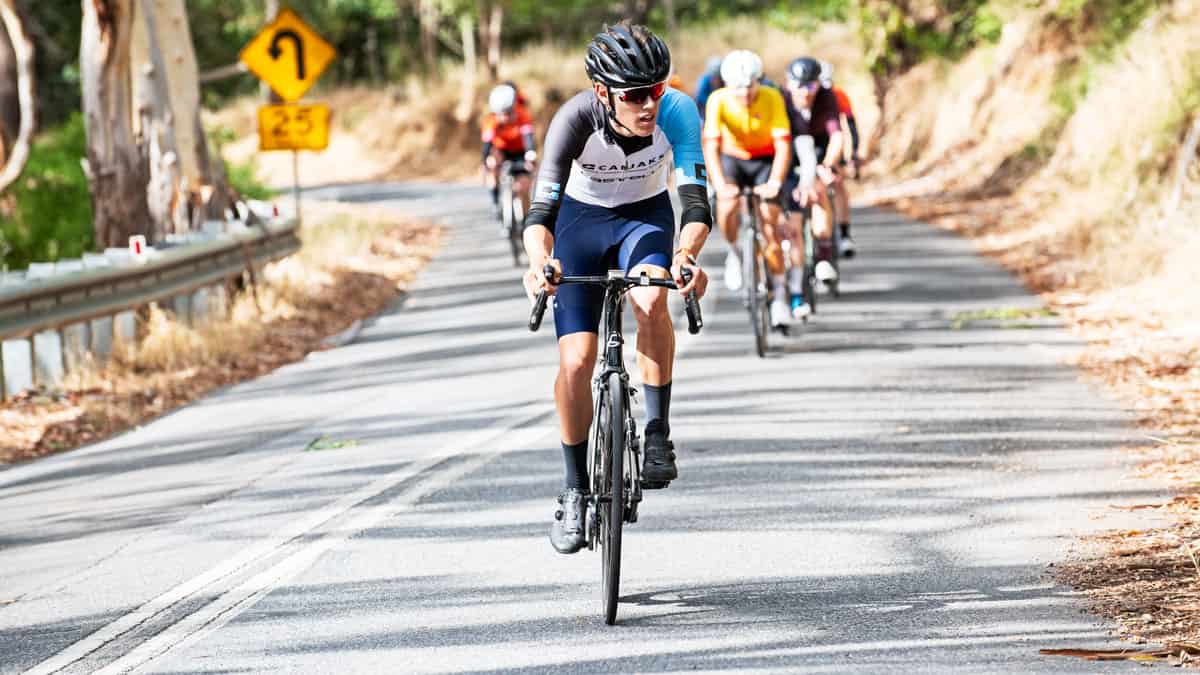Low Cadence Cycling Benefits: Why It’s Key to Building Strength and Efficiency
Cyclists often focus on improving their FTP (Functional Threshold Power) as a measure of fitness, but sometimes, there are better ways to enhance performance. Low cadence cycling benefits are an excellent alternative for developing strength and efficiency, particularly for hill climbing and sustained efforts. Let’s explore why this approach is worth incorporating into your training plan.
What Are Low Cadence Cycling Benefits?
Low-cadence cycling, typically pedalling at 50-70 revolutions per minute (RPM), places more strain on your muscles than higher-cadence efforts. This type of training mimics resistance work, which helps improve muscular endurance and strength—key factors for climbing steep hills or pushing through headwinds.
How Low Cadence Training Builds Strength
One of the primary benefits of low-cadence cycling is its ability to build strength in your quadriceps, hamstrings, and glutes. By working at a lower RPM, your muscles must generate more force per pedal stroke, turning your bike into a resistance machine. Over time, this improves your power output, making you more capable of sustaining harder efforts without fatigue.
Low Cadence Drills for Cycling Strength
Incorporating low-cadence drills into your training routine is straightforward. A typical session might involve:
- Warm-Up: Start with 10-15 minutes at a comfortable cadence of 85-95 RPM.
- Main Set: Perform intervals of 4-6 minutes at 50-60 RPM, keeping your heart rate in Zone 3-4.
- Recovery: Spin at 90 RPM for 2-3 minutes between intervals.
- Cool-Down: End with 10 minutes of easy spinning.
By repeating these sessions 2-3 times per week for a four-week block, you’ll notice significant gains in your cycling strength.
Why Balance Low and High Cadence Work?
While the benefits of low-cadence cycling are undeniable, balancing it with high-cadence efforts is crucial for overall performance. High-cadence drills improve neuromuscular coordination and pedalling efficiency, complementing the strength gained from low-cadence work. Combining both types of training ensures a well-rounded approach to cycling fitness.
Real-World Applications of Low-Cadence Cycling
Low cadence training isn’t just for indoor workouts. It’s particularly effective for tackling long climbs or simulating the demands of gravel and mountain bike races. By incorporating these sessions, you’ll be better equipped to handle real-world challenges on the bike.
Conclusion
Low cadence cycling benefits beyond just building strength; it enhances your overall efficiency and ability to tackle demanding terrain. By incorporating this type of training alongside high cadence work, you’ll develop a more versatile and powerful cycling engine. Low-cadence cycling is a game-changer whether you’re aiming to conquer steep hills or improve your endurance.
Start including low cadence drills in your training routine today and experience the benefits for yourself!
Ready to elevate your cycling performance? Book a free call to discuss whether you are a good fit for my coaching program and how I can create a personalised coaching plan to help you achieve your goals.






Leave A Comment